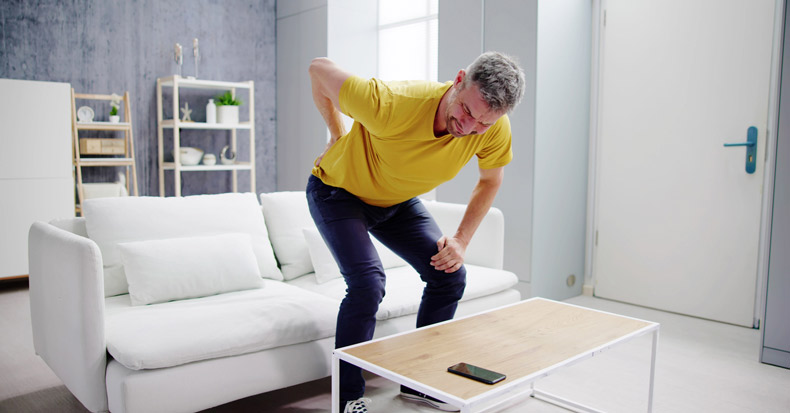It’s estimated that 84% of individuals will experience at least one episode of low back pain during their lifetime, with 23% developing chronic low back pain. While dysfunction in the lumbar region is typically thought to be the cause of a patient’s low back pain, there’s a growing body of research suggesting that the underlying cause or contributing factor to low back pain can come from the hips, hamstrings, and feet/ankles:
- Dysfunction of the lumbopelvic region has been demonstrated to alter core muscle function associated with movement, which can reduce spinal stability and place increased load on the lower back, setting the stage for back pain. In a 2023 study, researchers observed that 50% of hip osteoarthritis patients had co-occurring lumbar spinal stenosis—a debilitating condition associated with the degeneration of the spine. Interestingly, a 2022 study found that 90% of hip osteoarthritis patients with co-occurring low back pain experienced a resolution of their low back symptoms after receiving treatment to address their hip condition. Another study from 2023 found that pelvic tilt increased the risk for low back pain by 12% while a 2016 study noted that individuals who participated in a program to reduce pelvic tilt reported a reduction in back pain. Other studies have found that weak hip muscles, tight hip muscles, and reduced hip range of motion can also contribute to low back pain.
- A systematic review that included twelve studies concluded that tight hamstrings may increase the risk for low back pain by 4%. A 2021 study that included 104 younger adults revealed that nearly three-quarters of those with either chronic neck or low back pain reported tight hamstrings in one or both legs. The authors noted that hamstring tightness can affect the biomechanics of the spine, increasing the risk for disorders such as low back pain and neck pain. Additionally, a 2023 study reported that differences in hamstring flexibility between the right and left leg may also set the stage for future low back pain.
- Ankle-foot pronation is a term used to describe the inward rolling for the foot and ankle. This leads to internal rotation of the leg that encourages an anterior pelvic tilt (which in turn increases the curve in the low back and negatively affects spine biomechanics) and strain on the piriformis muscle (which can increase pressure on the sciatic nerve causing pain, numbness, and/or weakness in the lower limb). A 2021 study found that among a group of 101 chronic low back pain patients with excessive foot pronation, those provided with a custom foot orthotic reported a significant reduction in low back pain within four weeks.
The good news is that doctors of chiropractic are trained to examine the whole patient and not just focus on the area of chief complaint. So if you visit a chiropractor for low back pain, don’t be surprised if they also look at the hips, hamstrings, and feet/ankles because issues in these areas may also need to be addressed to achieve a satisfactory outcome.



